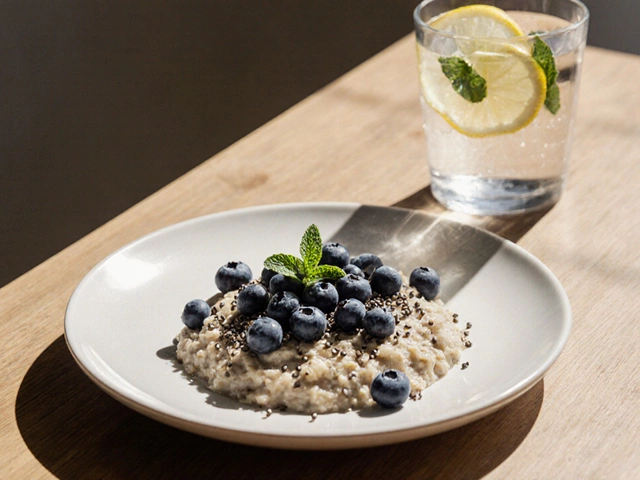Kiwi – What It Is, Why It’s Good, and How to Use It
If you’ve never tried a kiwi, you’re missing out on a sweet‑tart fruit that’s packed with vitamins. It’s small, fuzzy, and easy to eat once you know the tricks. Below you’ll find the basics on picking a ripe kiwi, the top health reasons to add it to your diet, and a few simple ways to use it in everyday meals.
Why Kiwi is a Nutrient Powerhouse
First off, kiwi is loaded with vitamin C – more than an orange per serving. That vitamin helps your immune system, keeps skin clear, and speeds up recovery after a workout. It also has vitamin K, which supports bone health, and potassium, which balances blood pressure. The fibre in kiwi helps digestion and can lower cholesterol over time.
Another plus is the antioxidants. Kiwi contains compounds like lutein and zeaxanthin that protect your eyes from age‑related damage. If you’re watching your weight, the low calorie count (about 60 calories per fruit) makes it a smart snack that satisfies sweet cravings without adding a lot of extra energy.
People with digestion issues often notice that the natural enzymes in kiwi, especially actinidin, help break down protein. That means a kiwi after a steak or a bean dish can make the meal easier on the stomach.
Easy Ways to Add Kiwi to Your Meals
Now that you know why kiwi is good, here’s how to put it to work. The easiest start is to eat it raw. Cut off the ends, slice it in half, and scoop out the flesh with a spoon. It’s a mess‑free snack that you can take to work or school.
If you prefer a less fuzzy look, peel the skin with a knife or a vegetable peeler. The skin is edible, but some people don’t like the texture. Once peeled, dice the fruit and toss it into a fruit salad, yogurt bowl, or overnight oats for a pop of flavor.
For a quick breakfast, blend a kiwi with a banana, a splash of milk, and a handful of oats. You’ll get a creamy smoothie that’s both refreshing and filling. Kiwi also works well in savory dishes – try adding sliced kiwi to a chicken salad, or mix it with avocado and lime for a zingy salsa.One tasty recipe that takes under 10 minutes is a kiwi‑mint vinaigrette. Blend two kiwi, a handful of fresh mint, a tablespoon of olive oil, a splash of apple cider vinegar, and a pinch of salt. Drizzle it over mixed greens, and you have a salad that feels restaurant‑worthy without the effort.
Store kiwi at room temperature until it’s soft, then move it to the fridge to keep it fresh for a few days. If you buy a bunch and only want a few now, you can freeze the flesh in ice‑cube trays and use the cubes later in smoothies or baking.
Bottom line: kiwi is cheap, versatile, and full of nutrients. Whether you eat it straight, blend it, or add it to a dish, you’re getting a boost of vitamins, fibre, and antioxidants with minimal hassle. Grab a few at the next grocery run and start experimenting – your taste buds and body will thank you.

Why Kiwi Might Not Be Considered Vegan
by Landon Weathers / 26 Mar 2025Although kiwi may seem like a typical plant-based food, the use of animal-based processes in its production may lead some vegans to exclude it from their diet. Learn about the interplay between agriculture and vegan ethics, the intricacies of kiwi pollination, and alternatives for vegans concerned about ethical consumption.


